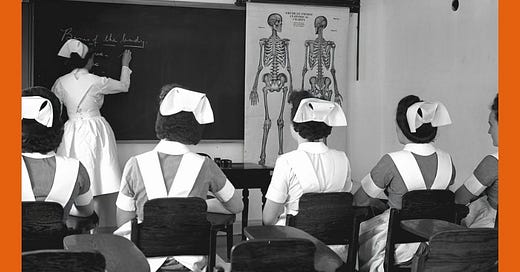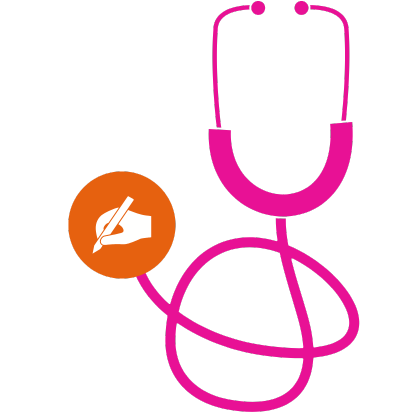WD Glossary: Lead/Lede
Write like a pro by learning the lingo. For the first in this series we look at the art of the opening.
Word Doc’s Glossary series will reveal the meaning behind some tricks and terms of the trade, and show examples of how best to execute them. While most professional writers will agree that writing rules are meant to be broken—that’s the whole point of developing your voice and style—a little guidance goes a long way. By the end of the post, you’ll be able to speak about your writing efforts as if you went to J-School. (That’d be Journalism School, friends. See? We haven’t even begun today’s lesson yet, and you’re learning already.) Let’s get word doc-umenting.
THE DEFINITION
It makes the most sense to begin the Glossary series at the beginning—and with the beginning—aka the opening sentence or statement, which we call the “lead” or “lede” in journalism. I’ll get to the spelling later, but for this exercise, we’ll go with the OG spelling I remember using in the magazine department at Syracuse University’s S.I. Newhouse School of Communications (Class of 2000—holla!): lede.
Now, personally, I can’t begin without The Beginning. Some writers can return to a lede, or even change it later on, but not me. If I don’t have an idea for how to begin my newsletter/article/essay/chapter, I’ll remain stalled at home base.
Without a spark of inspo, which, for me, often comes in the shower, out of nowhere, or while staring into space while my phone is on “Do Not Disturb,” I can’t put pen to paper/hand to keyboard, as it were. Essentially, not only do I need to hook the reader with my lede, I need to hook myself.
The point of a lede is that you’re “leading” (hence the pronunciation and one of the spellings) and guiding the reader towards the forthcoming story, ideally in an engaging manner. There are various types of ledes to employ, depending on your narrative style, the platform or outlet you’re writing for, and the intention of your tale.
TYPES OF LEDES
The Anecdotal Lede
As you might suspect, this type of lede begins with an anecdote or mini story. The goal? To grab the reader with intrigue and immediately give them something to connect with, an action to watch unfold, or an issue to ponder.
All good anecdotal ledes tell indirectly what the story is about. But a good anecdotal lede goes further and demonstrates the crux of the idea in the most dramatic terms possible.1
An example:
I learned that Mr. Lindenblatt was dying when I was in London this past November on business. I had awoken from a dream that his daughter Ilana, who is one of my oldest friends, was engaged. I called her up and asked if there was something I didn’t know, because I inherited a witchy quality from my mother: I occasionally have dreams about people and it turns out that they’re predictive or at least thematically correct. She laughed sadly and told me she wasn’t engaged, no, but that her father was dying and that perhaps the thing I had sensed across the ocean was her sadness. He has cancer, she said. He was receiving a palliative chemotherapy treatment, and the doctors didn’t have a guess as to how long he would live: weeks or months. Nobody really knew for sure, but the end was inevitable. And inevitabilities? In this story, they are everywhere. — Taffy Brodesser-Akner for The New York Times Magazine (gift link)
WD Says: Scene-setting? Check. Personal details? Check. Intrigue and a bit of mystery? Check.
The Summary Lede
The summary lede also gets down to business by grabbing your attention, but with clearer facts and less flowery language that still provoke you to continue reading.
The main purpose is to tell the reader what he or she will get in the story [sic], similar to the traditional newspaper lead, which tells who, what, when, where, why, and maybe how.
An example:
It started in April 1963, when friends of my parents returned to New Jersey from a trip abroad with a present for me. It was something a record shop clerk in London had recommended as the perfect thing for a 13-year-old girl.
I prepared myself to act surprised and grateful, even if I didn’t like it. But when I opened it, I gasped. The four young men on the album cover were the cutest guys I had ever seen. — Debbie Gendler for The New York Times (gift link)
WD Says: Who? The author. What? A Beatles album. When? April 1963. Where? New Jersey. Why? Present from parents.
The Summary Lede 2.0
All of the above, but make it shocking—scandalous, even!—and be sure the statement is of interest to your audience.
An example:
The last text message I received on Friday morning from Josh, a close friend since kindergarten, read: “I just had to wade in waist deep water to rescue my dog. Everything I own is ruined. I’m a bit emotional. Sorry. I need a min.”
Cell service dropped. Wi-Fi signal disappeared.
Josh lives 12 minutes from my house, which is near Cherokee, North Carolina. That short stretch of land and water between us made all the difference this week. Scotts Creek, which runs right by Josh’s house and is usually benign enough, swelled and formed a deadly confluence with the Tuckasegee River. And Dillsboro, his tiny community, just a few blocks in total, was submerged beneath the floodwaters that Hurricane Helene induced.
I was on the mountain, and my friend was in the valley. — Annette Saunooke Clapsaddle for The Atlantic (gift link)
WD Says: Dropped?! Disappeared?! Deadly?! Submerged?! Then, a cliffhanger? I’m invested.
The Descriptive Lede
This is the mood-setter; the turn-the-lights-down-low, put-on-some-low-fi-tunes, and make a good impression lede. When emotions are just as important—if not more than the basics (who/what/when/where)—lead with this lede.
An example:
Dear 1994 Sam Anderson: Hello. It’s me, 2024 Sam Anderson – you from the future, exactly 30 years from now. (I’m explaining because you are bad at math.) I am typing this on technology that doesn’t exist yet. I’m older than your parents currently are. I have a big beard, and my lower back hurts, and I spend most of my time playing word games or reading apocalyptic news alerts on the supercomputer I keep in my pocket. The 21st century, to be honest, sucks. To put it in terms you’ll understand: We’re trying to swing on the flippity flop, but we’re living in a harsh realm.
But I don’t want to scare you. There are good things too: wireless earbuds, exciting new flavors of Doritos. Weird Al Yankovic is still going strong. And your life has turned out better than you have any right to expect. You do not die of that thing you think you are dying of. You are allowed to write goofy things like this for your job. And — the biggest miracle of all — you have a stable, loving, long-term marriage.
For that last one, you owe a serious debt of gratitude to a classic film: the 1992 romantic comedy “Singles.” — Sam Anderson for The New York Times Magazine (gift link)
WD Says: He had me at “Dear 1994...” Who isn’t a sucker for nostalgia, not to mention notes to self?
NOT-SO-GOOD LEDE TYPES
Quotations & Questions
The quotation lead is generally ineffective because most quotations need an explanation to be understood, and explanatory material can slow down the lead.
A good rule to follow is that a writer’s job is to answer [questions], not to ask them.
It’s worth repeating that all of these lede “types” are suggestions, and there is often a time and place for even the not-so-good lede (quotations & question)—or a combination lede that may take a little from one and a little from another.
The best way to improve your writing? Read. A lot. See what’s out there; take note of what gets (and holds) your attention. Also, experiment! Try something one week, see how it feels and what kind of response it gets, and then maybe try something else.
Finally, is it lead or lede?
Writer/Editor’s choice! The old-school “lede” spelling took hold so as not to confuse editors by using a word that itself already had several meanings in the English language. Whereas “lede” only means “lede” to those in the biz. (It’s very, “if you know, you know.”) When used in context, though, “lead” is not only permissible but understandable. Consider it this way: Using “lede” is the equivalent of wearing no-show socks to the gym. You’ll reveal your age.
PRO TIP!
WHATEVER YOU DO, DON’T ’BURY THE LEAD/LEDE’
If you haven’t heard this phrase before, well, that means you’re doing something right. Editors will tell a writer they’ve “buried the lede” when they’ve started with something else and placed the hook of the story further into the piece, henceforth “burying it.”
EMAIL: helloworddoc@gmail.com
All italicized pull quotes in this piece come from “The Art of Writing Nonfiction,” written by André Fontaine and my former college professor, the late, great William A. Glavin Jr.







dropping all this knowledge for free! incredible stuff!